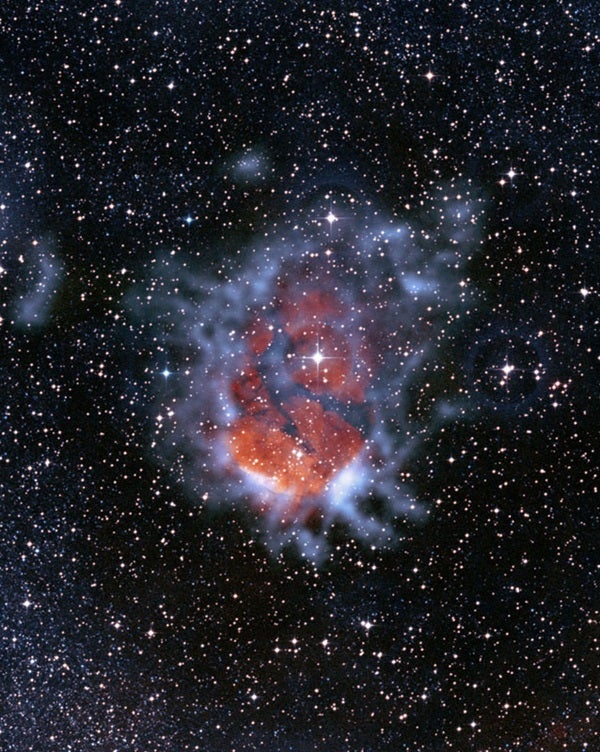Illustrating the power of sub-millimeter-wavelength astronomy, an Atacama Pathfinder Experiment (APEX) telescope image reveals how an expanding bubble of ionized gas about 10 light-years across causes the surrounding material to collapse into dense clumps that are the birthplaces of new stars. Sub-millimeter light is the key to revealing some of the coldest material in the universe, such as these cold, dense clouds.
The region, called RCW120, is about 4,200 light-years from Earth, towards the constellation Scorpius. A hot, massive star in its center emits huge amounts of ultraviolet radiation, that ionizes the surrounding gas and strips the electrons from hydrogen atoms to produce the red glow of so-called H-alpha emission.
As this ionized region expands into space, the associated shock wave sweeps up a layer of the surrounding cold interstellar gas and cosmic dust. This layer becomes unstable and collapses under its own gravity into dense clumps, forming cold, dense clouds of hydrogen where new stars are born. However, as the clouds are still very cold, with temperatures of around -418° Fahrenheit (-250° Celsius), their faint heat glow can only be seen at sub-millimeter wavelengths. Sub-millimeter light is vital in studying the earliest stages of the birth and life of stars.
The sub-millimeter-wavelength data were taken with the Large Bolometer Camera (LABOCA) on the 39-foot (12-meter) APEX telescope, located on the 16,400-foot (5,000-meter) high plateau of Chajnantor in the Chilean Atacama desert. LABOCA’s high sensitivity allowed astronomers to detect clumps of cold gas four times fainter than previously possible. Because the clumps’ brightness is a measure of their mass, astronomers now can study the formation of less-massive stars than they could before.
The plateau of Chajnantor is also where the European Space Organization (ESO), together with international partners, is building a next-generation sub-millimeter telescope, the Atacama Large Millimeter/sub-millimeter Array (ALMA). It will use more than sixty 39-foot (12-meter) antennae, linked together over distances of more than 10 miles (16 kilometers), to form a single, giant telescope.










